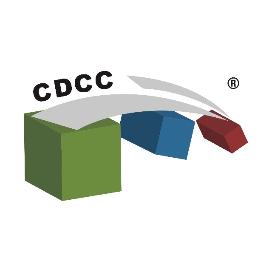| 数据中心标准、技术沟通交流平台 |
正文
请到「今天看啥」查看全文
AI boom and sustainability goals impact datacenter technology innovation
-
451 Research 的《企业之声:2024年数据中心基础设施》是一项于2024年 5月和6月间开展的针对熟悉数据中心基础设施技术的企业IT 决策者的全球调查。 -
451 Research’s Voice of the Enterprise: Datacenter, Datacenter Infrastructure 2024, a global survey of enterprise IT decision-makers familiar with datacenter infrastructure technology, fielded during May and June 2024.
-
451 Research 的《企业之声: 2024年 数据中心液冷技术》是一项于2024年6月至8月间开展的针对熟悉数据中心液冷技术的企业IT 决策者的全球调查。
-
451 Research’s Voice of the Enterprise: Datacenter, Liquid Cooling Technology 2024, a global survey of enterprise IT decision-makers familiar with datacenter liquid cooling technology, fielded during June and August 2024.
-
CDCC 的《数据中心行业调查:2024年数据中心基础设施》,该调查于2024年8月和9月期间开展,调查对象为中国熟悉数据中心基础设施技术的企业IT决策者。 -
CDCC’s Datacenter Industry Survey: Datacenter Infrastructure 2024, a survey of enterprise IT decision-makers in China familiar with datacenter infrastructure technology, fielded during August and September 2024.
-
CDCC的《数据中心行业调查:2024年数据中心液冷》,该调查于2024年8月至9月期间开展,调查对象为中国熟悉数据中心液冷技术的企业IT决策者。 -
CDCC’s Datacenter Industry Survey: Datacenter Liquid Cooling 2024, a survey of enterprise IT decision makers in China familiar with datacenter liquid cooling technology, fielded during August and September 2024.
-
在可预见的未来,混合IT基础设施仍将持续存在。尽管云技术已被广泛采用(72%),但许多使用云服务的组织也拥有并运营着服务器机房或服务器机柜(44%)以及数据中心(38%)。 -
Hybrid IT infrastructure will persist for the foreseeable future. Even though the cloud is widely adopted (72%), many organizations that use cloud also own and operate server rooms or server closets (44%) as well as datacenters (38%).
-
各组织正在推进不间断电源(UPS)冗余架构的发展,以平衡可靠性和总体拥有成本(TCO)。仅有29%的受访者表示使用2N或2(N+1)架构,而28%的受访者称其采用分布式冗余(DR)系统,19%的受访者则表示使用IR系统。可持续性促使锂离子电池作为柴油发电机的替代品或补充品得到采用。 -
Organizations are advancing uninterruptible power supply (UPS) redundancy architecture to balance reliability and total cost of ownership (TCO). Only 29% of respondents report using 2N or 2(N+1) architecture, while 28% say they have a distributed redundancy (DR) system and 19% have a catcher system. Sustainability drives the adoption of lithium-ion batteries as alternatives or supplements to diesel generators.
-
加速计算工作负载越来越受欢迎,使得机架密度不断提高。超过八成(82%)的受访者表示其数据中心运行有加速计算工作负载。机架密度超过10kW的情况十分普遍,未来五年机架密度预计还将普遍上升。 -
Accelerated computing workloads are gaining popularity and driving up rack density. More than four in five survey respondents (82%) say they run accelerated computing workloads in their datacenters. Rack density above 10 kW is prevalent, and density is set to broadly continue rising in the next five years.
-
空气冷却仍是主流的冷却技术,但液体冷却技术正在迎头赶上。近半数(48%)的受访者表示其系统仅采用空气冷却,38%的受访者表示其系统采用空气冷却和液冷技术相结合的方式,13%的受访者表示其系统仅采用液冷技术。在目前仅使用空气冷却技术的受访者中,56%的人表示其所在组织计划在未来五年内引入液冷技术(13%受访者计划在未来12个月内引入,31%受访者计划在未来2至4内引入,12%计划在未来5年内引入)。 -
Air cooling remains the dominant cooling technology, but liquid cooling is catching up. Just under half (48%) of respondents say they have an system that is solely air cooling, while 38% use a mix of air and liquid cooling and 13% have a purely liquid cooling system. Among respondents who currently use air cooling only, 56% say their organizations plan to introduce liquid cooling in the next five years (13% in the next 12 months, 31% in the next two to four years and 12% in the next five years).
-
解决更高的机架密度问题仍是液冷技术被提及最多的优点。超过半数(54%)的受访者认为液冷技术能够支持更高的机架密度(与提升GPU功率以及最小化GPU间距以实现集群化相关)是一项优势。其他优点包括在不出现过热的情况下提升服务器功率(45%)、改善PUE(39%)、优化TCO(38%)、运行更安静(32%)以及提升芯片热设计功率(27%)。 -
Addressing higher rack density remains the top cited benefit of liquid cooling. More than half (54%) of respondents cite supporting higher rack density (associated with increasing GPU power and minimizing GPU distance for clustering) as a benefit of liquid cooling. Other benefits include increased server power without overheating (45%), improved power usage effectiveness (39%), optimized TCO (38%), quieter operation (32%) and increased chip thermal design power (27%).
直播预告
DeepSeek的崛起,是否正在改变智算中心快速扩张的格局?DeepSeek技术突破为何被称为“游戏规则改变者”?智算中心是否会迎来降温?大模型训练与推理方式将如何演变?企业投资者该如何应对这一变革?
2月13日,CDCC直播间邀请业界专家,就DeepSeek会减少智算中心需求吗?这一核心展开讨论。
“第三届数据中心液冷大会”将于2025年3月27日在杭州召开 ,这场行业盛事将集结数据中心领域的顶尖专家、技术大牛和学术研究者,共同探讨创新趋势,携手谋划合作机遇,助力行业蓬勃发展。
关键词: 液冷、全栈、最佳实践、芯片、服务器、基础设施
嘉宾规模:500+专业人士
会议形式: 展览展示+主旨演讲+技术分享+应用案例参观
详情扫码咨询:
联系电话:13716595411
关注我们获取更多精彩内容
往期推荐
请到「今天看啥」查看全文

|
涨涨萝莉 · 解密次新股(五) 7 年前 |

|
数据局 · 百分点:“一带一路”国际舆情大数据报告 7 年前 |

|
新华网 · 荐读│人最容易迷失的地方不是深山老林,而是人群 7 年前 |

|
美闻参阅 · 曾国藩:世上有三种不祥之事,多少人因此失败 7 年前 |

|
捧腹笑话 · 每日捧腹图片精选:你会为了10亿美元扇你妈一耳光吗? 7 年前 |
